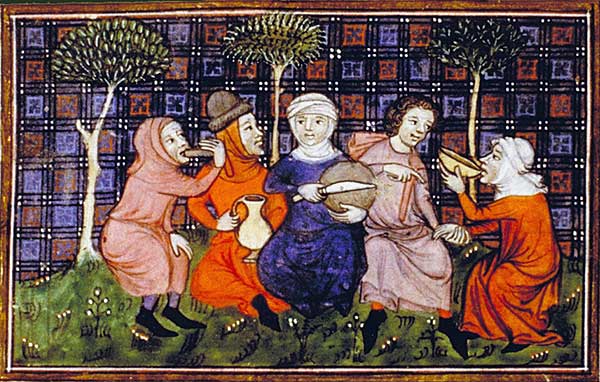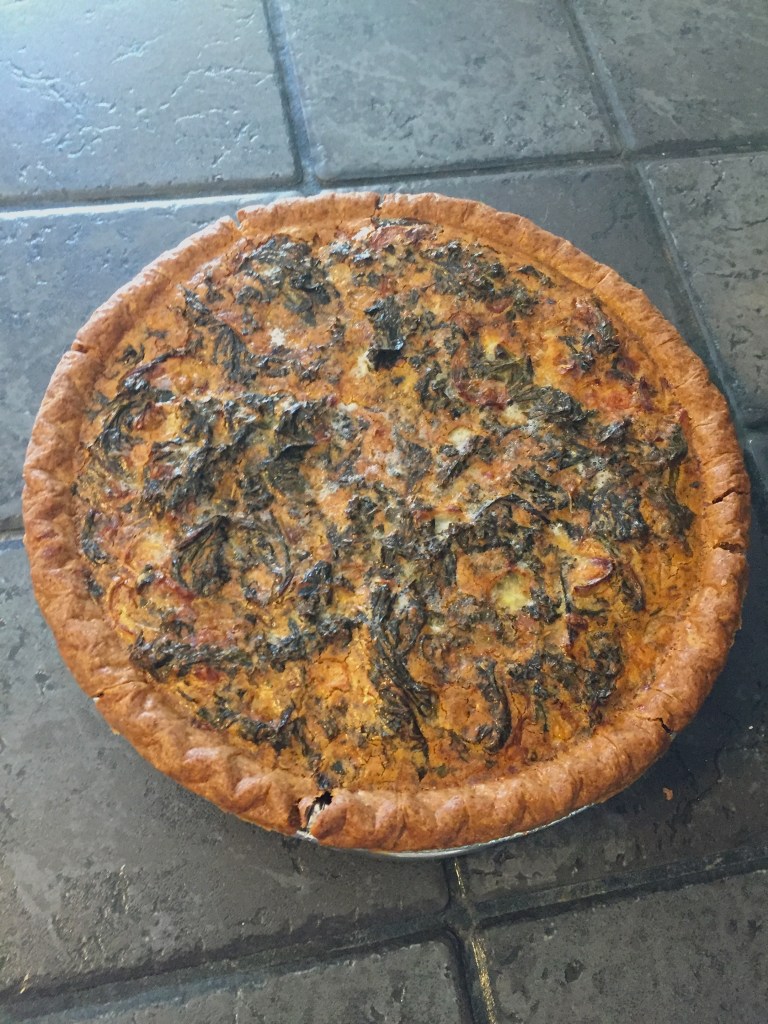
Lady Day
March 25th is Lady Day. This is another Marian holiday which incorporated older pagan traditions — in this case the New Year celebrations which fell on 25 March before Julius Caesar shifted the Roman observance to the beginning of January. Lady Day is nine months before December 25th, so you can probably figure out what it commemorates in the Church calendar, though it is also tradition that this day is the beginning of Creation, the spring of the world. I’m not sure if that means the “Let there be light” bits or the creation of man. I rather think it might be the first lovely day of rest, the “day of picnics”, as the Crash Test Dummies named it.

Through the millennia, most Spring traditions in Europe have become attached to either the beginning of March or the Christian Easter. The one main remaining activity associated with Lady Day is rent collection and beating the bounds. There are processions both to mark property and collect dues. There are also hiring fairs for agricultural workers in anticipation of the planting season. However, the British did like their boundaries and rents, so these things happen on all the quarter days, not merely Lady Day.
But there is one English story that is uniquely associated with Lady Day. I’ve seen it appear in folklore from many places around the British Isles with different characters and settings but the same narrative substance. It is similar enough to the tale of “Brigid’s Cloak” that it might be derived from her mythology.
In Brigid’s tale, she asks a miserly king for land so that she can minister to the poor and hungry. He turns her down. She then asks for just the land that she can cover with her cloak. He sneeringly agrees. Then he is astonished as four of Brigid’s acolytes grab the corners of her cloak and run in opposite directions over his best fields and orchards. He begs Brigid to stop them, to leave him some territory. Being kinder than I am, she agrees and sets up her famous abbey, Kill Dara, on the land that once was covered by her cloak. It does not say that the king was chastened, but he also seems not to have done anything else to provoke Brigid. Maybe he learned a bit of humility, if not generosity.

Now, here is my version of the Lady Day story that grew later in history.
In English folklore, this story is called The Crawls. You’ll see why.
There was a woman on her deathbed. She was wife to a wealthy landowner, wealthy because he was stingy and unkind to his poorer neighbors. The Lady was always generous in her lifetime which provoked her husband, but he could say little against her because even he could see the nobility of her actions and the poverty of his own.
But now that she was bound for death, he was moved to ask if she had any remaining wishes that he might grant. Anything at all, he said, he would give in her honor. She sat up a little and smiled.
“Yes, my husband, I do have a request. It is my wish that you set aside a portion of your lands to raise food for the poor and hungry. You have such vast holdings, it need not be a hardship to do this thing in my name. It would make me very happy to know that our neighbors are not wanting when I am gone.”
Thus exhausted from her speech, she lay down and slept.
Well, the landowner thought hard on this all night. He had agreed to her request before she made it, and he was not one to rescind his word. Yet he did not want to give up productive lands. He did not want to lose even a tithe of his income to feed people who seemingly could not take care of themselves.
In the morning he returned to his wife’s bedchamber and said, “I will grant you your wish. I will set aside land to feed the poor but on one condition. I will place a new log on the fire. What land you can walk in the time that this log burns to ash will be set aside.” So saying he placed a huge log in the fireplace and left.
Now, the Lady was indeed failing in body. Her husband knew she could hardly walk across the room, let alone walk the bounds. But inspired, she called to her servants and had them carry her to the best fields. Then she set to crawling.
Seeing her pitiful state, Lady Mary gave the woman the strength and endurance and speed of a young girl. The wife marked out over two dozen acres of the most productive land on the estate before the husband came out to announce that the log had burned away.
Contented and tired, she had her servants carry her back to her room, giving out instructions as they went. The land was to be planted with good grain each year. The harvest was to be milled and baked into bread. And every Lady Day, the anniversary of her miracle boundary walk, this bread was to be shared out to all who hungered. By the time the small procession reached the bedchamber, the Lady was dead.
Her husband grieved and, though chagrined at the loss of his best fields, he honored her request. Every year on Lady Day a dole of bread was handed out to all.

Now, it is said that there were other words spoken before the Lady died. Knowing her husband’s greed, she placed a curse on the promise. Should her bequest ever fail, should some miserly descendant not dole out bread for the hungry, then all the lands of the estate would likewise fail.
In some versions of the story, her husband tried to stop the dole in his lifetime. In most, however, the dole continues for many generations until one day a descendant decides that his want of wealth supersedes the bequest of a long-dead ancestor or the hunger of his neighbors.
In all stories, the curse comes terribly to life when the dole is halted. The estate fields produce no grain; the orchards are blighted and withered; the gardens produce neither bounty nor beauty; the livestock die of wasting diseases, leaving rotting carcasses in the abandoned pastures. The ancient manor house falls — sometimes to fire, sometimes to flood, sometimes to causes beyond nature. The family line fails, and the last miserly descendant dies alone in a crumbling world of his own making.
In addition to be Lady Day and the Full Sap Moon, this is also the Monday of Easter Week. In many places, this week is a strange combination of increased dolefulness and rising, barely contained, exuberance. For Christians this is the last week of Lent and the week that their savior deity became a sacrifice for them. This is the essential core of their faith, and so this is the pivotal week of their ritual calendar. But even among Christians, the festival spirit of Easter Sunday, the most holy day of their year, colors this week with joy. Lent is not over, but there is more focus on renewal than on dark dearth even in this darkest week of their year.
This is when many people of many faiths color eggs for the mostly secular celebration that is Easter (note that the holiday is named not for anything to do with the Christian faith, but after the ancient Saxon name for April). I tend to do that before the equinox, though when my kids were young, I would color a small batch for the equinox and then a much larger round for the Easter Egg Hunt — which carried on in our household until the kids were nearly teenagers. This year, I didn’t color eggs at all, mostly for lack of time. Instead, I am eating eggs — which I think is more the point. So here is my recipe for Spring Quiche.
It uses half a dozen eggs. I also used a pre-made pie crust, found in the freezer section of my food co-op and most other grocery stores. Most of these crusts come in packs of two because it’s just more efficient to make two pies at once — and often you need two. So if you are feeding a family (or a teenager), then double the recipe below. Otherwise, make one pie and keep the other crust in the freezer for later. You can also freeze this whole pie, so it makes sense to make two pies and freeze one.

Spring Quiche
Ingredients
3-4 Tbs butter
4 medium shallots, minced
3 large cloves garlic, minced
8-10 leaves kale, washed well & chopped
(I used Winterbor.)
up to 1/4 cup marsala cooking wine
2-3 tsp pink salt, coarsely ground
6 eggs
1 cup shredded sheep's milk cheese
(I used Vermont Shepherd Invierno.)
1 9" pie crust (your own or pre-made)
Herb mix
1 tsp French thyme
1/2 tsp marjoram
1/2 tsp winter savory
1/4 tsp chervil
1/8 tsp white pepper
Yes, I appreciate the irony of a spring quiche made with winter kale and winter cheese…
Instructions
Peel and mince the shallots and garlic.
Wash the kale very well. (Dirt loves to cling to those wrinkles). Chop it coarsely.
Melt the butter over medium heat.
Sauté the shallots until they are translucent but not browned.
Add the garlic and kale.
Pour the marsala wine over the veg and sprinkle with coarsely ground salt of some special variety.
Turn the heat to low and let the kale wilt in the pan, stirring occasionally.
Shred the cheese into a large bowl.
Add the eggs and beat together.
Add herb mix. I’ve suggested amounts, but use what you like. You might also use other herbs. Parsley and chives go very well in this recipe; I just don’t have any fresh right now.
When the kale is mostly wilted and somewhat dark, take the pan off the heat.

Let it cool a bit and then add to the egg mixture. Beat this all together well.
Pour into a 9″ pie crust, of your own making or pre-made.
Bake in the lower part of the oven at 350°F for one hour.
It is done when it is browned and firm.
Let it set a bit before cutting and serving.
If you have extra kale, toss it with capers, thinly sliced red onion, toasted hazelnuts and a vinaigrette dressing. Serve this as a side salad. Goes very well with a crusty wheat bread.
©Elizabeth Anker 2024


